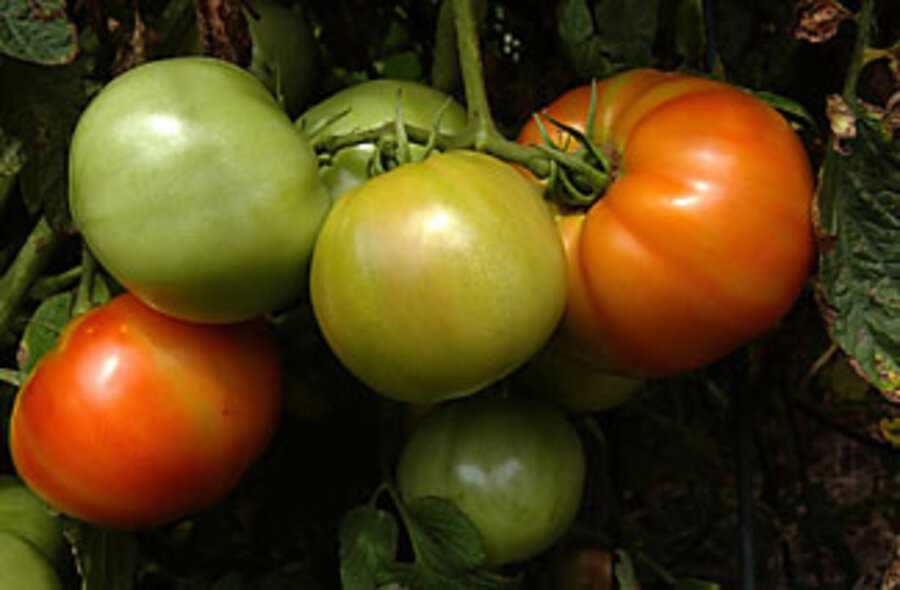The very determined tomato
Loading...
Yes, I know I'm doing everything wrong. I know full well that a tomato plant is grown as an annual. One is not supposed to even think of wintering it over. But Mae is a special case ... like a member of the family, you might say.
It all came about because of my propensity to want to rescue everything. In late summer of last year, when all my garden plants were looking jaded and I was secretly rejoicing at the end of my zucchini's days, I discovered a tiny tomato seedling striving to grow beneath the deck. There it was, in dense shade, yet struggling upward in an admirable demonstration of willpower. No common sense maybe, but determination certainly.
Having just emptied a large patio pot of its over-the-hill occupant, I stuck the seedling into the pot. Surely it would never amount to anything so late in the season, but somehow I felt its persistence deserved a reward. It should at least have the opportunity to bask in the sun, no matter for how brief a period.
"What are you keeping that thing for?" was a frequent question from veteran gardeners, for which I had no sensible answer.
I just wanted to watch it grow. And grow it did. As the outdoor garden wound down and the days grew cooler and shorter, Mae – I don't remember who first named it; short for to-mae-to perhaps? Or just a whimsical joke – flourished in the enclosed part of the deck, whose tinted roof panels admitted lots of light.
Finally, when even the deck was too frigid, I dragged Mae's pot into a spot at a sunny window. By then she was taller than I, a mass of vibrant green. And then ... she blossomed.
Once again, my friends were scornful: "So it's blossoming! You'll never get a tomato from it."
I didn't care. I just enjoyed the plant's presence as winter closed in. Mae's blossoms must have self-pollinated because soon there were minuscule tomatoes in evidence. Not wanting to overtax the plant, I removed all but two and waited hopefully. Truthfully, I believed the scoffers were right ... that the tiny fruit would shrivel away.
But Mae had the last laugh. With great ceremony, we sliced her two deliciously ripe and juicy offerings for Christmas dinner.
Mae continued to thrive through the winter. In spring, we moved to Vermont. With so many houseplants to transport, the thought of moving an old tomato plant was ludicrous. We brought Mae anyway. She sits on the new deck in the company of two splendid containers of yellow cherry tomatoes, looking a bit like Miss Haversham of Dickens fame.
Recently, the painter working on our house, who is an avid gardener and grows heirloom tomatoes, asked, "Would you mind if I just broke off these yellow spotted leaves? I can't stand looking at them."
I was a bit defensive. "I am pinching them off a few at a time as she puts out new ones," I replied.
He shrugged, wisely keeping his thoughts of crazy old ladies to himself.
But guess what? Mae is blossoming on her new shoots and has set another small green tomato. And I don't care if she isn't as prolific as her younger neighbors. She's an old friend who made the journey with me and deserves to enjoy peace and sunlight for as long as she may.





